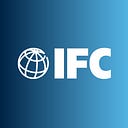IFC and HSBC Global Asset Management launch first green bond fund targeting non-financial or ‘real economy’ issuers in emerging markets
By Philippe Le Houérou
A version of this article was originally published in the Financial Times beyondbrics.
Few countries understand the dangers of climate change better than Thailand. Temperatures have been rising for decades, rainfall is increasing and extreme weather events such as monsoons, floods and droughts are frequent.Without urgent action, climate change could devastate Thailand’s lucrative rice crop and eventually submerge Bangkok. Achieving Thailand’s ambitious goal of reducing greenhouse gas emissions by 20 per cent over the next decade will take innovation, investment and commitment. Institutions such as local bank TMB are moving in the right direction, by providing new sources of finance for climate-smart projects. TMB was a pioneer last year when it became the first Thai commercial bank to issue a green bond.
Others need to follow TMB’s lead, not just in Thailand but across the globe. The world needs $90tn in climate investment by 2030, and green bonds can play a vital role. A decade ago, green bonds were virtually non-existent. Today, they are a rapidly growing asset class, bringing much-needed new capital not just to the clean energy sector but to energy-efficient buildings, sustainable land use, waste, water and transport. According to the Climate Bonds Initiative, global green finance needs to reach $1tn by the end of 2020 and continue to grow each year. That’s a daunting sum, far beyond the reach of governments alone.
However, it is also a vast opportunity for sustainable global development, with investment potential in the trillions of dollars and the ability to drive innovation and create green industries and new jobs. Green bonds can and should play a greater role in mobilising a good portion of that funding. The good news is that development institutions, banks, investors and corporations are working together to create innovative investment structures, attract more investors and encourage a diverse new class of borrowers, and to set standards that promote integrity and transparency for green capital markets issuances.
That growth is impressive — and a measure of investors’ eagerness to address the greatest development challenge of our time. Yet green bonds remain a small sliver of the $100tn global bond market. What’s needed to enlarge that sliver and bring green bonds further into the mainstream? First, we need new tools that make it easier and more attractive for investors to get involved and for borrowers to access climate finance.
This week, IFC and HSBC Global Asset Management launched one such tool — the first green bond fund targeting non-financial, or “real economy”, issuers in emerging markets. The fund is expected to catalyse at least $500m to $700m in private capital to support a diversified portfolio of climate-smart investments, largely through a mix of bonds from manufacturing, agribusiness, services, infrastructure and subsovereign issuers, in addition to a smaller allocation of financial-institution bonds.
Non-financial borrowers are an untapped opportunity in the green bond market. Last year, they accounted for just 18 per cent of total global green bond volume. The new fund, known as the Real Economy Green Investment Opportunity Fund (REGIO), will provide an additional source of finance for these borrowers. This effort complements the pioneering Amundi Planet Emerging Green One (EGO) fund, in which IFC is a cornerstone investor. The Amundi fund focuses on financial-sector bonds and recently celebrated its first anniversary. Of course, supporting the supply side of the green bond market and implementing strong market standards are key to bolstering the market.
At IFC, we help borrowers issue their own green bonds by providing investment capital for specific green bond issues and technical assistance. Frequently, such borrowers are first-time issuers and the bonds are in diverse currencies. The REGIO initiative with include a technical support programme designed to help potential issuers. Along with other capital market participants, we have worked to develop guidelines and procedures for the green bond market as a member of the Green Bond Principles Executive Committee. The Green Bond Principles were established in 2014 to promote market discipline, transparency and to avoid “greenwashing”. At the World Bank Group, we have committed to investing and mobilising $200bn over five years to support climate business and pledged to increase climate finance to an average of 35 per cent of our direct annual financing commitments.
If the world doesn’t act quickly, 100m people could be pushed into poverty over the next decade as a result of climate change. Green bonds offer an opportunity to investors, countries and companies working to battle the impact of the warming planet. They are the definition of impact investing — using investment dollars not just for financial return but also to achieve social good. As a new generation of investors becomes more socially aware and eager to make a difference in the world, green bonds have the potential to become the investment vehicle of choice. Working together, we can make sure that the financing needed for a low-carbon, resilient future is within reach.
Philippe Le Houérou is the Chief Executive Officer of the International Finance Corporation.
